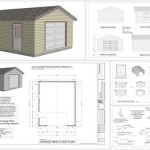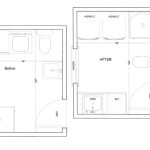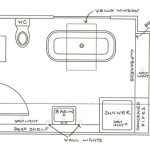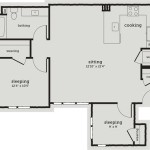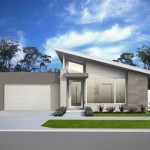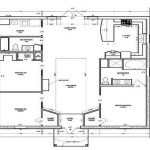Log Cabin Home Plans Designs: A Comprehensive Guide
Log cabin home plans represent more than just architectural blueprints; they embody a lifestyle choice, connecting individuals with nature and a simpler, more rustic aesthetic. The process of selecting the right log cabin home plan design involves careful consideration of various factors, including land topography, budget, lifestyle preferences, and long-term needs. This article explores the diverse world of log cabin home plans, providing insights into different design styles and essential elements to consider when embarking on the journey of building a log home.
Understanding Different Log Cabin Home Plan Styles
Log cabin designs are not monolithic; they exist in a variety of styles, each possessing unique characteristics. The choice of style will significantly influence the overall look and feel of the home, as well as its functionality and construction complexity. Here are some prominent log cabin home plan styles:
Traditional Log Cabins:
This style evokes a sense of history and simplicity. Traditional log cabins often feature a rectangular shape, a single story, and a gabled roof. Interior spaces are typically open and straightforward, emphasizing practicality and functionality. The logs themselves are often left exposed, both inside and out, showcasing the natural beauty of the wood. Porches are a common feature, providing a welcoming outdoor space and protection from the elements. Traditional plans often prioritize energy efficiency through careful insulation and strategic placement of windows and doors.Contemporary Log Homes:
Contemporary log homes blend rustic charm with modern design elements. These plans often incorporate larger windows, open floor plans, and cathedral ceilings to create a spacious and airy feel. Modern amenities, such as gourmet kitchens, spa-like bathrooms, and home theaters, are seamlessly integrated into the log home aesthetic. Contemporary designs might incorporate materials like stone, glass, and metal to create a visually striking contrast with the natural logs. The layouts are frequently more complex and asymmetrical, reflecting a desire for individuality and personalized living spaces.Rustic Log Homes:
Rustic log homes emphasize the natural, unrefined beauty of the logs. These plans often utilize logs with varying diameters and textures, showcasing the unique character of each piece of wood. Stone fireplaces, exposed beams, and handcrafted details are common features. Rustic designs often incorporate elements of nature into the interior spaces, such as natural wood flooring, handcrafted furniture, and earthy color palettes. The overall aesthetic is cozy, inviting, and deeply connected to the surrounding environment.Hybrid Log Homes:
Hybrid log homes combine log construction with other building materials, such as timber framing, conventional framing, or structural insulated panels (SIPs). This approach allows for greater design flexibility and can be a more cost-effective option than building a full log home. Hybrid plans can incorporate large windows, complex rooflines, and custom layouts that would be difficult or impossible to achieve with traditional log construction. The combination of materials can also enhance the energy efficiency and structural integrity of the home.Small Log Cabins:
Small log cabins are ideal for individuals or couples seeking a cozy and low-maintenance retreat. These cabins typically range in size from a few hundred to a thousand square feet and often feature a single open living space with a sleeping loft. Small log cabin plans are often designed for off-grid living, incorporating features such as solar panels, rainwater harvesting systems, and composting toilets. Despite their small size, these cabins can be surprisingly comfortable and functional, providing all the essentials for a simple and fulfilling lifestyle.Key Considerations When Choosing a Log Cabin Home Plan
Selecting the right log cabin home plan requires careful planning and attention to detail. Several factors must be considered to ensure that the final product meets the individual's needs and expectations. These key considerations include:
Land Topography and Site Orientation:
The topography of the land will significantly impact the design of the log cabin. A sloped site may require a split-level design or a walk-out basement, while a flat site may be more suitable for a single-story cabin. Site orientation is also crucial for maximizing energy efficiency. Orienting the cabin to take advantage of solar gain in the winter and shade in the summer can significantly reduce heating and cooling costs. Soil conditions should also be assessed to ensure that the foundation can support the weight of the log structure.Budget and Construction Costs:
Building a log cabin can be a significant investment. It is important to establish a realistic budget and to carefully research the costs associated with log cabin construction. Log costs can vary depending on the type of wood, the diameter of the logs, and the complexity of the design. Labor costs can also be significant, especially if the construction requires specialized skills. Other costs to consider include site preparation, foundation work, roofing, windows, doors, plumbing, electrical, and interior finishes. Obtaining multiple bids from qualified contractors is essential for ensuring that the project stays within budget.Lifestyle and Functional Needs:
The design of the log cabin should reflect the individual's lifestyle and functional needs. Consider how the space will be used and how many people will be living in the cabin. A family with young children will have different needs than a retired couple. Think about the number of bedrooms and bathrooms needed, the size of the kitchen and living areas, and the need for storage space. Also, consider any specific hobbies or activities that will require dedicated space, such as a home office, a workshop, or a craft room. Designing the cabin to accommodate these needs will ensure that it is a comfortable and functional living space.Energy Efficiency and Sustainability:
Energy efficiency is an important consideration for any home, but it is especially important for log cabins. Log homes can be naturally energy efficient due to the thermal mass of the logs, which helps to regulate temperature fluctuations. However, it is important to ensure that the cabin is properly insulated and that the windows and doors are energy efficient. Consider using sustainable building materials, such as reclaimed wood, recycled content insulation, and low-VOC paints. Incorporating renewable energy sources, such as solar panels or wind turbines, can further reduce the environmental impact of the log cabin.Local Building Codes and Regulations:
Before beginning construction, it is essential to research local building codes and regulations. These codes may dictate specific requirements for log cabin construction, such as foundation requirements, fire safety regulations, and energy efficiency standards. Failure to comply with these codes can result in delays, fines, or even the demolition of the structure. It is advisable to consult with a local building inspector or architect to ensure that the log cabin design meets all applicable codes and regulations.Essential Elements of a Log Cabin Home Plan
Beyond the overall style and key considerations, understanding the essential elements that comprise a log cabin home plan is crucial for a successful build. These elements define the functionality and aesthetic appeal of the cabin.
Log Choice and Construction Methods:
The type of log used and the construction method employed will significantly impact the look, feel, and structural integrity of the log cabin. Common log species include pine, cedar, and fir, each with its own unique characteristics. Construction methods include full scribe, chinked, and timber frame. Full scribe logs are carefully fitted together to create a tight seal, while chinked logs are separated by gaps that are filled with chinking material. Timber frame construction combines log elements with a timber frame structure, allowing for greater design flexibility. The choice of log and construction method should be based on factors such as budget, aesthetics, and climate.Foundation and Structural Support:
The foundation is the base of the log cabin and must be strong enough to support the weight of the log structure. Common foundation types include concrete slabs, crawl spaces, and basements. The choice of foundation will depend on factors such as soil conditions, topography, and the desired use of the space. Proper drainage is essential to prevent moisture damage to the logs. Structural support is also crucial, especially in areas with heavy snow loads or seismic activity. The log cabin plan should include detailed specifications for the foundation and structural components.Roofing and Weatherproofing:
The roof is the first line of defense against the elements and must be designed to withstand the weather conditions in the area. Common roofing materials for log cabins include asphalt shingles, metal roofing, and cedar shakes. The roof should have adequate overhangs to protect the logs from rain and snow. Proper weatherproofing is essential to prevent water damage and air infiltration. This includes sealing all joints and cracks in the logs and using weather-resistant caulking and sealants. A well-designed and properly installed roof will ensure that the log cabin remains dry and comfortable for many years to come.Windows and Doors:
Windows and doors are critical for providing natural light, ventilation, and access to the outdoors. They should be energy efficient and weather resistant to minimize heat loss and air infiltration. Log cabins often feature large windows to take advantage of scenic views. The windows and doors should be properly installed and sealed to prevent drafts and water damage. Consider using insulated glass and weatherstripping to further enhance energy efficiency. The style of the windows and doors should complement the overall aesthetic of the log cabin.Interior Finishes and Details:
The interior finishes and details of the log cabin should reflect the individual's personal style and create a comfortable and inviting living space. Common interior finishes include wood flooring, drywall, and stone accents. Consider using natural and sustainable materials whenever possible. The details, such as lighting fixtures, hardware, and trim, can add character and charm to the log cabin. Thoughtful planning and attention to detail will ensure that the interior spaces are both functional and aesthetically pleasing.Selecting and implementing the right log cabin home plan design requires a comprehensive understanding of various factors. By carefully considering the style, key considerations, and essential elements, individuals can create a log home that is both beautiful and functional, seamlessly blending with the natural environment while providing a comfortable and sustainable living space.

Best 4 Bedroom Log Cabin House Plans Home Floor

Standout Log Cabin Plans Escape To An Earlier Gentler Time

Edgewood 2 Bed Bath 1 5 Stories 1148 Sq Ft Appalachian Log Timber Homes Hybrid Home F Floor Plans Cabin House

Rustic Open Concept Home Plan 3657 Toll Free House Plans Design

Tiny Houses Living Large Southland Log Homes

Log Home Planning Step 1 Design Timberhaven Timber Homes

Log Home Plans Floor And Designs For Houses

Log Home Plans Floor Plan Designs Blueprints Houseplans Com

Log Home Floor Plans North Homes

3000 4500 Sqft Log Home And Cabin Floor Plans Pioneer Homes Of Bc

